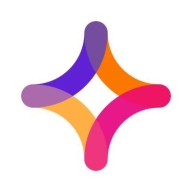

IBM InfoSphere Information Server and Jitterbit Harmony are competitors in the data integration solutions market. IBM InfoSphere Information Server has the upper hand due to its comprehensive suite of integration tools and robust data governance capabilities.
Features: IBM InfoSphere Information Server offers extensive data integration and governance, high data quality, and lineage tracking. Jitterbit Harmony provides intuitive integration capabilities with drag-and-drop functions, simplified APIs, and rapid enterprise application connectivity.
Room for Improvement: IBM InfoSphere Information Server could improve in simplifying its deployment process, reducing the need for specialized training, and enhancing user interface friendliness. Jitterbit Harmony can enhance its data governance features, expand integration capabilities with more enterprise systems, and further improve scalability for larger organizations.
Ease of Deployment and Customer Service: Jitterbit Harmony features straightforward cloud-based deployment minimizing setup time and reducing IT overhead, alongside highly responsive customer service. IBM InfoSphere Information Server, with its powerful features, involves a more complex deployment process needing specialized training but is supported by a dedicated team.
Pricing and ROI: Jitterbit Harmony generally offers a cost-effective pricing structure, offering quicker ROI due to lower initial setup costs. IBM InfoSphere Information Server, while more expensive, is justified by its long-term benefits from extensive features.


Jitterbit Harmony is a comprehensive platform for data integration and API management, enabling seamless synchronization and automation across cloud-based and on-premises applications.
Users leverage Jitterbit Harmony to integrate systems like ERP and CRM applications, simplifying complex data workflows and enhancing automation. It supports efficient data migration and ensures smooth connectivity, handling diverse integration needs and helping streamline business processes. Users emphasize its drag-and-drop functionality and extensive templates, which contribute to its robust performance. However, improvements are needed in data mapping, error message clarity, and documentation, especially when dealing with large data volumes.
What are the key features of Jitterbit Harmony?Companies across retail, manufacturing, healthcare, and finance sectors use Jitterbit Harmony to integrate critical applications and automate workflows. In retail, it connects inventory systems with sales platforms, reducing manual effort. Manufacturers sync their ERP systems with supply chain software, optimizing operations. Healthcare organizations integrate patient management systems with insurance databases, streamlining patient care. Financial institutions use it to connect accounting software with banking systems, ensuring real-time financial data exchange.
We monitor all Data Integration reviews to prevent fraudulent reviews and keep review quality high. We do not post reviews by company employees or direct competitors. We validate each review for authenticity via cross-reference with LinkedIn, and personal follow-up with the reviewer when necessary.